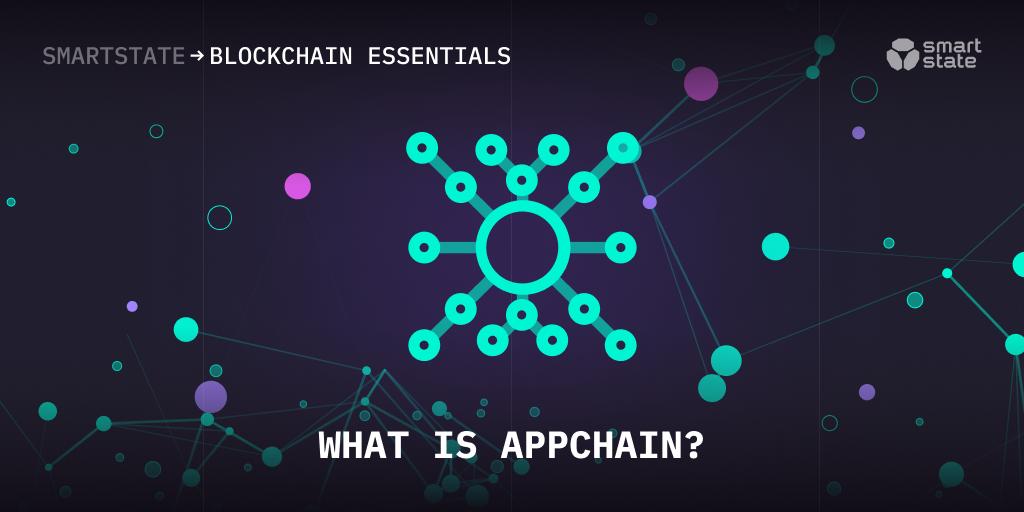What is Appchain
An Appchain (application-specific blockchain) is a type of blockchain dedicated to only one certain application (or a specific set of applications). They serve as subnets in such ecosystems as Polygon or Avalanche. Initially Appchains were defined as single-use (single application) blockchains, as opposed to multi-app ones, such as Ethereum.
Appchains provide developers with freedom in forming new eco-systems, control architecture and consensus algorithms for their own dApps, give them security, throughput and customizability, all without the need to design an extra L-1 chain. An appchain offers the developers extra transaction processing capacity while still enjoying the security of the main ‘mother’ chain.
The best appchain for a project depends on its specifications. While every appchain provides customizable economic structure and governance structure, their performance, tokenomics, consensus algorithms and accessibility vary. The creation process is the first thing to be taken into account (some blockchains allow only for a limited number of appchains and the developer would have to compete for a slot). Another important one is the choice of the consensus algorithm. Some blockchains offer more validators than others. As far as security is concerned, the developer had better research how transactions would be validated on their appchains.
How do they operate?
The operation of an appchain is similar to the main blockchain with the exception that the appchain is app-specific (e.g. tied to one application). Difference in operation of various appchains depends on the blockchain being used. Appchains also use their own tokens when staking for validators, as in-app ownership, in-app currency or even for voting. Appchains call for validators from the main blockchain, so that they do not need to compete with other apps, due to a separate set of validators securing transactions from them. Apart from the token, appachains require their own crypto-economic design, incentive models and customized codebase. In other words, developers receive all the benefits of their applications running on a dedicated blockchain, while still enjoying lower transaction congestion and state validation provided for by the mother chain.
Benefits of running an appchain
Monolithic structures like Ethereum being secure and rather attractive and comfortable, yet have some problems, such as centralization and the lack of freedom for developers. Appchains help to solve some of them, which allow developers to benefit from creating such a chain. What are these benefits?
- Sovereignty. It is an ability to govern the chain (in monolithic chains all applications must obey the rules of the host chain). DApps can also work directly with validators, determine and adjust transaction fees, which usually comes out cheaper. Unlike the case with monolithic chains, on the Appchain it is possible for a dApp to modify the code it uses.
- Tokenomics. Most dApps can create their native tokens and use it for any purpose (for example, the user may pay transaction fees with it). Appchains have sovereignty over the codebase, thus, they make their own decisions on how to handle the transaction ordering. It makes it possible to generate and control MEV (Maximal expectable value) revenue.
Appchain compared to other chains
Appchans, as mentioned above, offer developers customizability and other advantages, at the same time retaining the security of the mother chain. Yet, cognition comes through comparison. In what aspects do appchains differ?
- From L1s. An appchain is different from a Layer 1 blockchain in that it operates for one specific application (or a set of applications), however, it can use validators from the Layer 1 blockchain (the main blockchain), which the application is based on.
- From L2s. Appchains are different from Layer 2 blockchains ( ‘scaling solutions for the main blockchains, completing some tasks delegated from the main blockchain in that they can not operate a number of various applications at once.
- From sidechains (a blockchain, compatible with an L1, which does not use it for security. Unlike L2s they do not post transactions on the main chain and operate their own security protocols). Unlike sidechains, appchains are app-specific (they are tied to specific applications).
- From subgraphs (a part of a graph protocol responsible for indexing and querying the data on a blockchain; they are open APIs and make the data accessible to anyone. They can be divided into three parts: the manifest (describes and provides the information concerning smart contracts, which are indexed), the scheme (defines which data is stored) and the mappings (write and AssemblyScript, which takes care of the event data and updates the blockchain). Although both of them can be used for application creation, subgraphs do not allow the developers to create their own dlockchains and only serve to describe and organize the data.
Conclusion
Building appchains provides developers with unique advantages. Creating an application on a monolithic blockchain means it would have to compete with other applications for computation and space, which would lead to a decrease in productivity and expanding time of action. Appchains are more flexible and open to customization without decreasing the level of security. Moreover their creation is becoming easier and more convenient.

